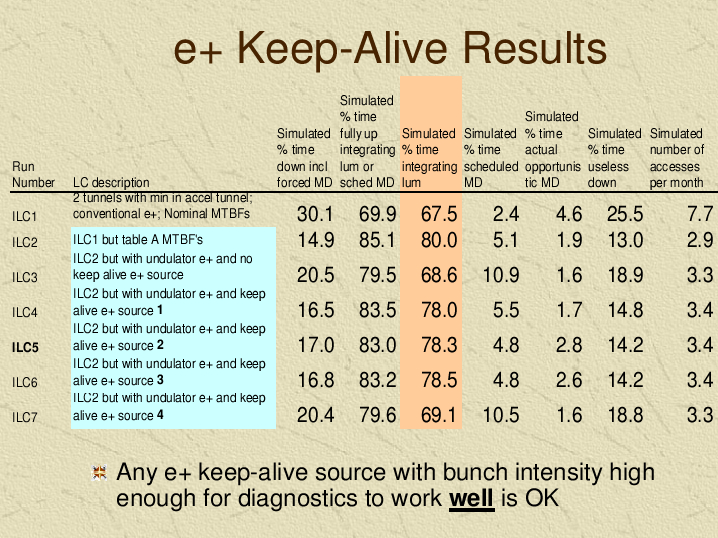 The impact of the positron source on the machine availability was first studied under the assumption
that the recovery time after a shutdown is proportional to the time without beam.
The impact of the positron source on the machine availability was first studied under the assumption
that the recovery time after a shutdown is proportional to the time without beam.
The results showed, that with the inclusion of an auxiliary source, achieving between 1%--20% of intensity, practically all possible loss in integrated luminosity, caused by the undulator source, will be compensated. The used option ILC2 implies a conventional source (with 2 targets) and assumes that the mean time between failures (MTBF) can be improved for selected components by about a factor 2-20. More details about further made assumptions can be found in this talk, given at Snowmass 2005 in the sessions of the 'Operations and Avalability' working group. In the Positron Source White Paper 2005, it has been agreed that an undulator-based source with a keep-alive source of 10% nominal intensity suffices to meet all needed ILC requirements. |


